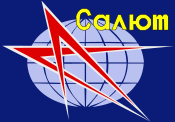| Mission type | Test flight |
|---|---|
| Operator | Soviet space program |
| COSPAR ID | 1973-067A |
| SATCAT no. | 06836 |
| Mission duration | 1 day 23 hours 15 minutes 32 seconds |
| Orbits completed | 31 |
| Spacecraft properties | |
| Spacecraft | Soyuz 7K-T No.1 |
| Spacecraft type | Soyuz 7K-T |
| Manufacturer | Experimental Design Bureau (OKB-1) |
| Launch mass | 6570 kg [1] |
| Landing mass | 1200 kg |
| Crew | |
| Crew size | 2 |
| Members | Vasily Lazarev Oleg Grigoryevich Makarov |
| Callsign | Урал (Ural - "Ural") |
| Start of mission | |
| Launch date | 27 September 1973, 12:18:16 UTC |
| Rocket | Soyuz |
| Launch site | Baikonur, Site 1/5[2] |
| End of mission | |
| Landing date | 29 September 1973, 11:33:48 UTC |
| Landing site | 400 km at the southwest of Karaganda, Kazakhstan |
| Orbital parameters | |
| Reference system | Geocentric orbit[3] |
| Regime | Low Earth orbit |
| Perigee altitude | 194.0 km |
| Apogee altitude | 249.0 km |
| Inclination | 51.6° |
| Period | 88.6 minutes |
 Salyut program insignia | |
Soyuz 12 (Russian: Союз 12, Union 12) was a September, 1973, crewed test flight by the Soviet Union of the newly redesigned Soyuz 7K-T spacecraft that was intended to provide greater crew safety in the wake of the Soyuz 11 tragedy. The flight marked the return of the Soviets to crewed space operations after the 1971 accident. The crew capacity of the capsule had been decreased from three to two cosmonauts to allow for pressure suits to be worn during launch, re-entry and docking. It was the first time pressure suits were used for reentry since the Voskhod 2 flight.[4]
Cosmonauts Vasily Lazarev and Oleg Grigoryevich Makarov spent two days in space testing the new craft.
- ^ Cite error: The named reference
Displaywas invoked but never defined (see the help page). - ^ "Baikonur LC1". Encyclopedia Astronautica. Archived from the original on 15 April 2009. Retrieved 4 March 2009.
- ^ Cite error: The named reference
Trajectorywas invoked but never defined (see the help page). - ^ Newkirk, Dennis (1990). Almanac of Soviet Manned Space Flight. Houston, Texas: Gulf Publishing Company. ISBN 0-87201-848-2.